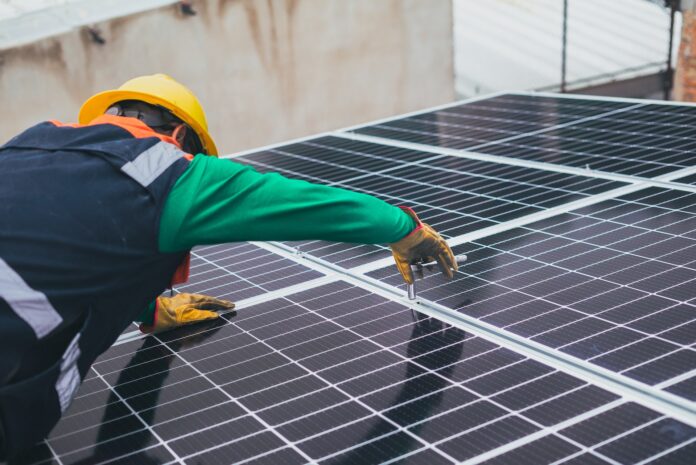Have you ever wondered how much energy a photovoltaic (PV) panel can produce? Photovoltaic panels are becoming more popular as a source of renewable energy, and many people are interested in knowing how much electricity they can generate. In this article, we will explore the factors that affect the energy production of PV panels and estimate the amount of energy that a typical panel can generate.
Factors that Affect Energy Production of Photovoltaic Panels
Several factors affect the energy production of PV panels. Let’s take a closer look at each of these factors:
1. Sunlight Intensity
The amount of energy that a PV panel can produce depends on the intensity of the sunlight that falls on it. The more intense the sunlight, the more electricity the panel can generate. Therefore, the amount of energy produced by a PV panel will vary depending on the time of day, season, and location.
2. Temperature
The temperature also affects the energy production of PV panels. When the temperature is high, the efficiency of the panel decreases, and the energy production reduces. Therefore, PV panels should be installed in a location with good ventilation, allowing air to circulate and keep the panels cool.
3. Panel Orientation
The orientation of the panel also plays a vital role in energy production. PV panels should be placed in a location that receives maximum sunlight throughout the day. The ideal orientation for PV panels is facing south in the northern hemisphere and north in the southern hemisphere. The panel angle should also be adjusted according to the latitude of the location to achieve maximum energy production.
4. Panel Size and Type
The size and type of the panel also affect energy production. The larger the panel, the more electricity it can generate. Monocrystalline panels are more efficient than polycrystalline panels and can produce more energy in the same amount of space. Thin-film panels, on the other hand, are less efficient than crystalline panels but are lighter and cheaper.
Estimating Energy Production of Photovoltaic Panels
The amount of energy that a photovoltaic panel can generate depends on several factors, including its size, efficiency, and location. Let’s take a closer look at how to estimate the energy production of a PV panel:
1. Wattage Rating
The wattage rating of a PV panel indicates the maximum power it can generate under standard conditions. For example, a 300-watt PV panel can generate up to 300 watts of power under ideal conditions. However, the actual energy production will vary depending on the location and other factors.
2. Energy Yield
Energy yield is the amount of energy that a PV panel can produce in a year under specific conditions. The energy yield of a PV panel depends on its wattage rating, efficiency, and location. In general, a 1-kilowatt PV panel can generate between 1200 and 1800 kilowatt-hours (kWh) of electricity per year, depending on the location and other factors.
3. Location
The location of the PV panel is critical in determining its energy production. Areas with high solar radiation will produce more energy than areas with low solar radiation. The solar radiation in a particular location depends on several factors, including latitude, altitude, and climate.
4. Efficiency
Efficiency is the percentage of solar energy that a PV panel can convert into electricity. The efficiency of PV panels varies depending on the type and manufacturer. Monocrystalline panels are more efficient than polycrystalline panels and thin-film panels. The efficiency of PV panels ranges from 15% to 22%.
5. System Size
The size of the PV system also affects energy production. A larger PV system can produce more energy than a smaller system. Therefore, the energy production of a PV system is not only dependent on the size of the individual panels but also the number of panels used in the system.
Calculating the Energy Production of a Photovoltaic Panel
Now that we have looked at the factors that affect the energy production of PV panels let’s see how to calculate the energy production of a typical PV panel.
Suppose we have a 300-watt monocrystalline PV panel located in a location with high solar radiation and an efficiency of 20%. We can calculate the energy production of the panel as follows:
1. Determine the Energy Yield
The energy yield of the panel can be calculated by multiplying the wattage rating of the panel by the number of hours of sunlight it receives per day and then multiplying the result by the number of days in a year.
Energy Yield = Wattage x Sunlight hours x Days per year
Assuming that the panel receives an average of 5 hours of sunlight per day and there are 365 days in a year, the energy yield can be calculated as follows:
Energy Yield = 300 watts x 5 hours x 365 days = 547.5 kWh
Therefore, the panel can generate up to 547.5 kilowatt-hours of electricity per year under ideal conditions.
2. Adjust for Efficiency
The actual energy production of the panel will be lower than the energy yield because of the efficiency of the panel. Therefore, we need to adjust the energy yield based on the efficiency of the panel.
Actual Energy Production = Energy Yield x Efficiency
Using an efficiency of 20%, we can calculate the actual energy production as follows:
Actual Energy Production = 547.5 kWh x 0.20 = 109.5 kWh
Therefore, the actual energy production of the 300-watt monocrystalline PV panel would be approximately 109.5 kilowatt-hours per year under ideal conditions.
FAQs
- How much energy can a PV panel produce per day?
The amount of energy that a PV panel can produce per day depends on several factors, including the size, efficiency, and location of the panel. On average, a 1-kilowatt PV panel can produce between 3 and 5 kilowatt-hours of electricity per day under ideal conditions.
- How long do PV panels last?
PV panels are designed to last for many years. Most manufacturers offer warranties of 25 years or more for their panels. However, the actual lifespan of a PV panel depends on several factors, including the quality of the panel, the installation, and maintenance.
- Can PV panels work on cloudy days?
PV panels can still produce energy on cloudy days, but the energy production will be lower than on sunny days. The amount of energy that a panel can produce on a cloudy day depends on the thickness of the cloud cover and the efficiency of the panel.
- How much do PV panels cost?
The cost of PV panels depends on several factors, including the size, type, and manufacturer. On average, a 1-kilowatt PV panel costs between $2,000 and $4,000. However, the cost of a PV system can be reduced by applying for rebates and incentives.
Conclusion
Photovoltaic panels are an excellent source of renewable energy, and they can generate a significant amount of electricity under ideal conditions. The amount of energy that a PV panel can produce depends on several factors, including the size, efficiency, and location of the panel. By understanding these factors, you can estimate the amount of energy that a PV panel can produce and decide if it is a suitable option for your energy needs.
The article was written in cooperation with the experts of mafot.com – installation elements for photovoltaics








